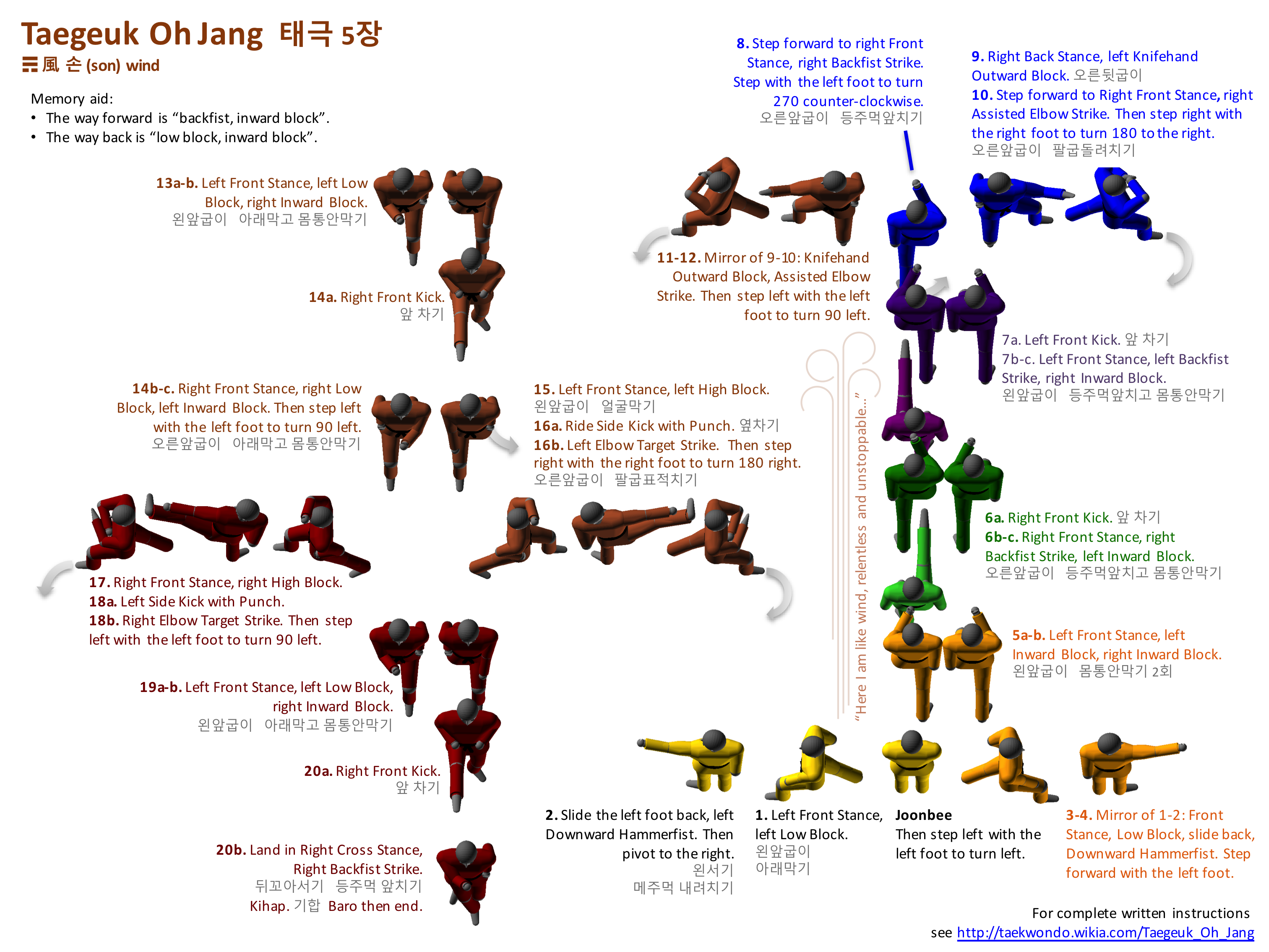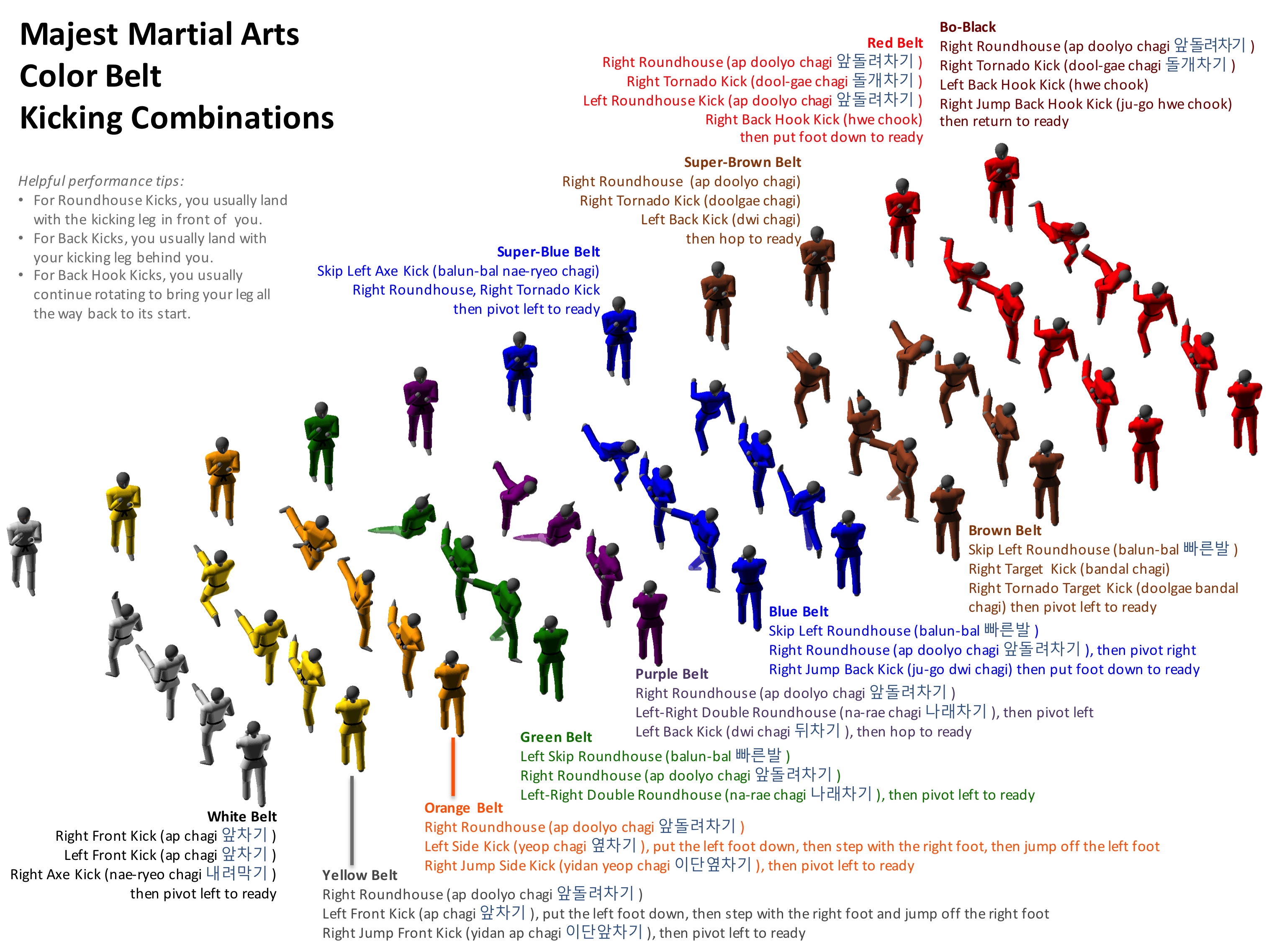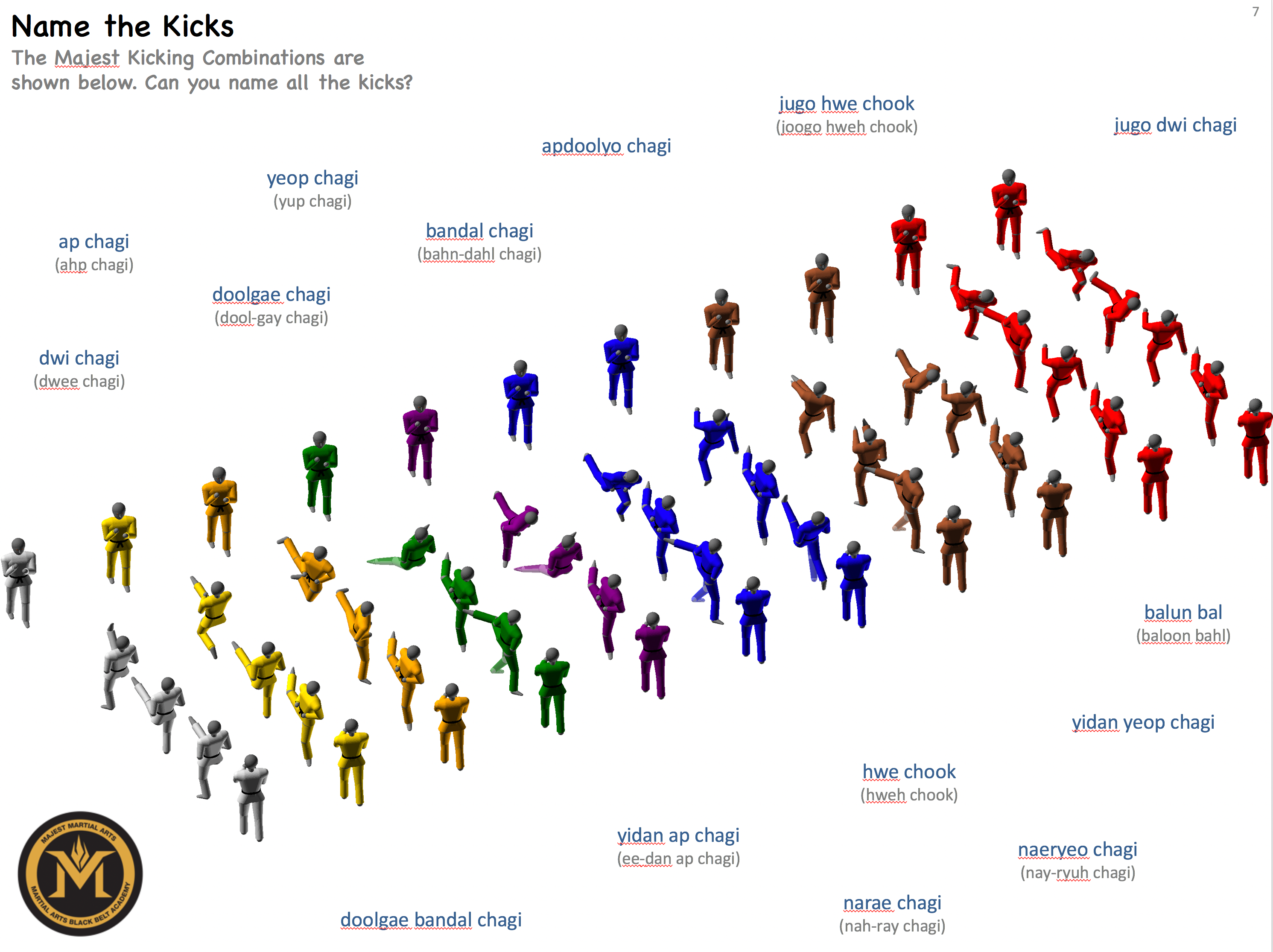Brown Belt Curriculum
Majest Martial ArtsAt Majest, Brown Belt students (3rd gup) practice the form Taegeuk Oh Jang. The I Ching trigram for this poomsae (☴) represents wind. The wind is relentless, unstoppable. You can see the relentless nature of this poomsae in steps 5-8: Middle Block, Middle Block; Kick, Backfist, Middle Block; Kick, Backfist, Middle Block; Backfist — the movements just keep coming, relentlessly…like the wind. No other Taegeuk Poomsae has such a long unbroken chain of techniques. Truly this is a beautiful example of how the meanings of the trigrams are expressed in the poomsae. The fact that only the first line of the trigram is a broken line indicates that only the first major turn of this form is a pivot-in-place.
For what seems like a relatively straightforward poomsae, there’s really a tremendous amount of depth in this form. At steps 2 and 4 the Side Stance is used for the first time — a common source of challenge among beginner students as they often erroneously pull their feet into a Walking Stance instead. The Elbow Target Strike at steps 10 and 12 are fun to perform, but getting a sufficient amount of “twist” in the torso can be tricky. At steps 16 and 18, the Side Kick with Punch is particularly difficult to perform well. Read more about this poomsae along with step-by-step instructions at: Taegeuk Oh Jang.
3rd gup - Brown Belt, Taegeuk Oh Jang (step by step)
3rd gup - Brown Belt, Taegeuk Oh Jang (with written instructions)
3rd gup - Brown Belt, Taegeuk Oh Jang
3rd gup - Brown Belt breaking
At Majest, the board-breaking technique for Brown Belt is Back Hook Kick.
3rd gup - Brown Belt kicking combination
The kicking combination for Brown Belt is Skip Roundhouse with the left leg (“balun bal” — meaning fast foot), a Crescent Kick (“bandal chagi”) into the hand (called the “target”) with the right leg, and a Tornado Crescent Kick (doolgae bandal chagi, again into a “target” hand) with the right leg. Using the hand as a target for the kick requires that the student kick at a good height!
3rd gup - How Parents Can Help
As you help you child practice this poomsae at home, here are some things to keep an eye on:
- On the way up the stem of the poomsae (steps 5-7) the student performs a Backfist Strike followed by an Inside Middle Block. In either case, the fist finishes in nearly the same position, but the journey that the fist takes to get into position could not be more different!
- For the Backfist Strike, the fist is chambered on the ribs under the armpit of the opposite arm, and then the fist arcs upward to strike the opponent on the upper-lip.
- For the Inside Middle Block, the fist is chambered out to the side of the body, palm turned away from the body, and then the fist arcs inward to finish in front of the sternum.
- When your child practices this form at home, make sure that the above two movements don’t wind up “looking the same”. The Backfist Strike should finish high, at upper-lip level. The Middle Block should finish lower, at sternum-height. The Backfist Strike should be arcing upward from under the opposite arm; the Middle Block should chamber to the side of the body and then arc inward. Many students have difficulty making these two movements “look different” — this usually indicates that the student has not chambered for each movement correctly.
- Students also often have difficulty remembering the movements along the stem of this form. On the way forward, the pattern is “Backfist – Middle Block” repeated several times. On the way back, the pattern is “Low Block – Middle Block” repeated several times.
Here’s another TaeKwonDo activity game, just for fun:











